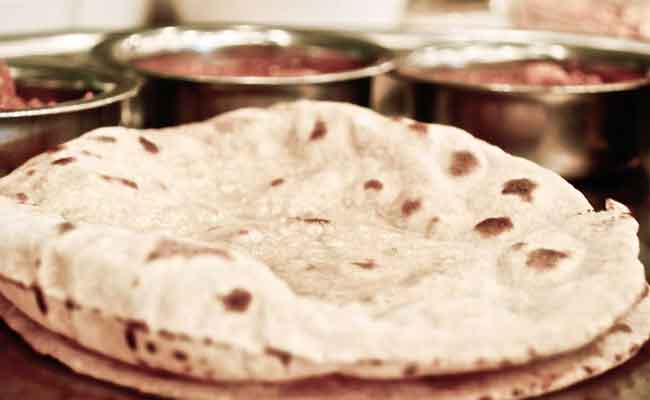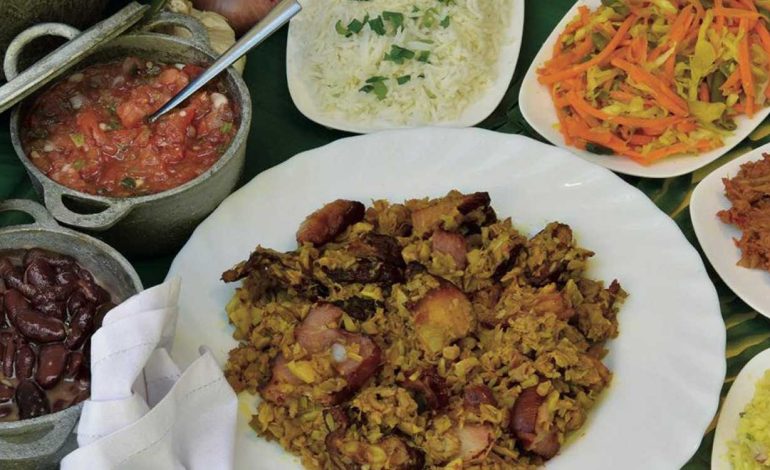You dare not eat it because you suffer from high blood pressure, diabetes, cholesterol, or simply because you are on a diet? Then look no further, because one Mauritian chef has created an exciting new chapati that takes care of all those fears.

A head chef has conjured a brand new concept for chapati that is specifically designed for diabetes and cholesterol sufferers. According to him, his chapati is healthy and tasty and will slot in nicely with the Mauritian health-conscious public.
Mr. Ramprogus says: “My uncle, who loves eating chapatis, gave me the idea. He said that a lot of people who suffer from diabetes and cholesterol must avoid eating chapati. So I thought, well, why not create a chapati that will cater for these people? Mauritius ranks among the top on the world list of diabetes sufferers, and I wanted to offer a healthy alternative to these people. I would like to add that not only is it healthy, but it is also very tasty, and it can become a healthy eating option for everyone.”
According to Mr. Ramprogus, the preparation process is quite tricky. “All the preparation is done in the kitchen and to the highest hygienic standards that you would find in any classy and reputable restaurant. The chapati is prepared mainly from wheat flour and water. I do not use ingredients such as margarine and salt, which are usually used in making chapatis. To make the dough stick together, it is important to knead the wheat properly, and a bit of technique is needed to roll it out,” says Mr. Ramprogus.
He tells us that it was hard going when he first started out. He says, “Initially, I found it tough to get the correct blend of ingredients. The dough was sticky, and it was not rising on the iron plate (tawa). Once I overcame these difficulties and managed to strike the right balance of ingredients, there was another issue I had to contend with: to semi-cook the chapati at the correct temperature. It is important that it is not completely cooked. This way, the consumer can either pop it over a tawa or simply run it through a microwave for a few minutes, and in no time the chapati is ready for eating.” Nowadays, many Mauritians care about how and what they eat. This chapati caters not only for those that have certain illnesses or are health conscious, but also for those that lead a hectic lifestyle because of its simplicity to prepare.”
Mr. Ramprogus adds that the chapati should be offered in places such as hospitals and clinics. He strongly believes in the beneficial properties of his chapati and intends to ensure that all Mauritians can make the most of them. “I will approach health clinics and also the Ministry of Health and see whether they would be interested in using my chapati. It is a new product, and therefore certain people would be hesitant at first, but hopefully the quality and benefits of the product will win them over,” he adds.
A pharmacist in Rose Hill, A. R., who sells healthy food believes that healthy chapati is exactly what the Mauritian public was waiting for. He says, ‘Personally, I love it. My wife was unsure initially, but now she has taken to it. I also have stock in my shop, and I recommend it to my customers. Mauritians need to pay attention to what they eat because we have been taught poor eating habits. We must revisit our eating habits, and this product is an excellent start. Hopefully there will be more products like this on the market.”
A gym instructor at the Sports Gym also believes that the chapati is beneficial for those on diets and athletes. He says, “It is a great source of energy, and you can eat as much as you want, depending on your appetite. It is a good alternative to bread and pasta.”
I am speaking with a diabetes and cholesterol sufferer who has been eating chapati over the last few months. She says, “It’s amazing how nice it is for me to eat a chapati now. My doctor warned me to avoid eating chapati, but this chapati has offered me an alternative. At first I was sceptical, but not only am I now convinced of its healthy properties, I am also pleased to have noticed that I have lost some weight.”
Passion for food
Mr. Ramprogus tells us that his love for cooking began when he was 13 years old, and his passion transformed into a career as he spent over two years in London’s 50 St James restaurant in Green Park. ” It was a wonderful experience, and as a result, I have learned many new culinary techniques and come up with innovative ideas. My time in London has taught me how to think outside the box with respect to cooking,” he says. He adds that Mauritius has a growing restaurant culture, but unfortunately, there are limited options.
He says, “In London, there are restaurants that cater for all taste buds with cuisines right across the world. In Mauritius, we lack these choices.”. According to him, Mauritian chefs do not have the knowledge. He adds, “We bring talented chefs from abroad, but they ply their trade in hotels. It is very rare to find a Mauritian chef who has learned foreign cuisine and has opened a restaurant. Furthermore, the few that have mastered foreign cuisine are tentative when using innovative cooking approaches and hesitate to fuse different types of cuisine to try and create a unique taste. Personally, I enjoy cooking Thai and French cuisine, but I also like to be creative and adventurous with my cooking styles.
“There is one major stumbling block. Hotels are fortunate that they import their ingredients from abroad, but it is very hard to find foreign ingredients locally,” he says before adding, “this penalises local people from trying new flavours. A close friend of mine, who used to live in London, often complains that he cannot cook certain foods because the sauces are unavailable here. Instead, he comes home and I prepare it for him. What would be nice to see, is a food court that hosts cuisines from across the world, such as Moroccan, Thai, Caribbean, and European, to offer Mauritians the delights of exotic food.”


